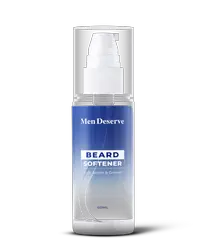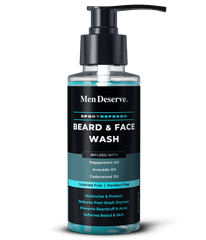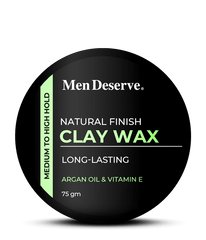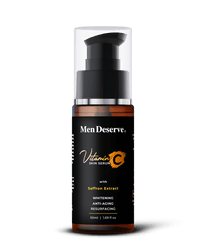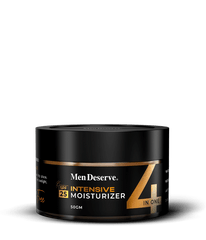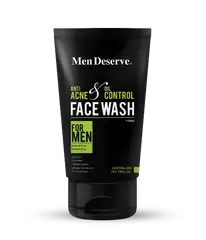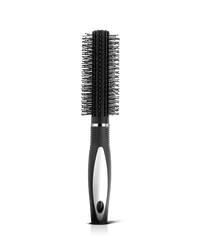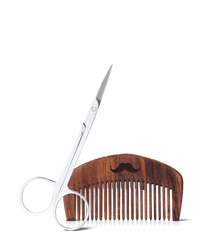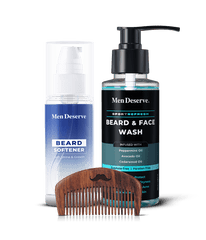Hair Growth for Men
Hair loss is a common concern for many men, often sparking a quest to uncover the secrets behind hair growth. In this blog, we'll delve into the science behind hair growth, separating myths from facts. Armed with scientific understanding, you can make informed decisions about your hair care regimen.
Understanding the Hair Growth Cycle
For many men, hair is more than just a part of their appearance; it's a symbol of youth, vitality and masculinity.

Image Credit: @nyhairloss
The hair growth cycle is a dynamic and continuous process that involves three distinct phases: anagen, catagen and telogen. Each phase plays a vital role in determining the length, thickness and overall health of your hair.
1. Anagen Phase
The anagen phase, also known as the growth phase, is where the magic happens. During this phase, the hair follicles are actively growing and your strands are continuously lengthening. For most men, the anagen phase can last anywhere from two to seven years, depending on genetic factors and individual characteristics. This phase is crucial for achieving long, healthy locks, as it accounts for the majority of your hair's growth.
2. Catagen Phase
Once the anagen phase comes to an end, the catagen phase begins. Think of this phase as a transitional period; a brief interlude between growth and rest. During catagen, the hair follicle undergoes a series of changes. It shrinks in size and blood flow to the area decreases, causing the hair to detach from the blood supply. While no new growth occurs during catagen, the hair remains firmly rooted in the follicle.
3. Telogen Phase
The final phase of the hair growth cycle is telogen, also known as the resting phase. During this stage, the hair follicle remains dormant and the hair shaft is no longer actively growing. Instead, it simply rests in place, waiting for the next phase of the cycle to begin. Telogen typically lasts for a few months, during which time the old hair is gradually pushed out by new growth. This shedding process is entirely normal and allows for the renewal of the hair follicles.
5 Myths Debunked
1. Myth: Wearing hats leads to hair loss.

Fact: While tight hats can cause breakage, they don't directly cause hair loss. Hair loss primarily results from genetics, hormonal changes and medical conditions like alopecia.
2. Myth: Shaving makes hair grow back thicker.

Fact: Shaving doesn't affect hair thickness or growth rate. It may seem thicker initially because shaved hair has a blunt edge but it's just an illusion.
3. Myth: Frequent shampooing causes hair loss.

Fact: Shampooing regularly doesn't contribute to hair loss. In fact, keeping your scalp clean and healthy can promote optimal hair growth by removing excess oil and debris.
4. Myth: Cutting hair frequently stimulates growth.

Fact: Hair grows from the roots, not the ends. Trimming split ends can improve the appearance of hair but it doesn't affect its growth rate.
5. Myth: Stress causes permanent hair loss.

Fact: Stress can trigger temporary hair loss known as telogen effluvium. However, once stress levels return to normal, hair typically regrows.
5 Facts to Embrace
1. Fact: Genetics play a significant role in hair loss.
Male pattern baldness, also known as androgenetic alopecia, is the most common cause of hair loss in men. It's inherited from both parents and is influenced by the hormone dihydrotestosterone (DHT).
2. Fact: Hormonal changes impact hair growth.
Testosterone and its byproduct DHT affect hair follicles, leading to hair thinning and eventual loss in susceptible individuals.
3. Fact: Nutritional deficiencies can affect hair health.
A balanced diet rich in vitamins, minerals and proteins supports healthy hair growth. Nutrients like biotin, vitamin D and iron are particularly important for maintaining hair health.
4. Fact: Scalp care is crucial for optimal hair growth.
Maintaining a clean and healthy scalp environment promotes hair growth and prevents conditions like dandruff and folliculitis, which can hinder hair growth.
5. Fact: Hair growth treatments can be effective.
FDA approved medications like minoxidil and finasteride, as well as hair transplant procedures, can help counteract hair loss and promote regrowth in some individuals.
Common Myths and Facts Debunked.
| Myth | Fact |
| Shaving makes hair grow back thicker | Shaving does not affect hair thickness or growth rate. It may appear thicker due to blunt edges. |
| Wearing hats causes baldness | Hats do not cause hair loss. Hair loss is usually genetic or hormonal. |
| Hair loss comes from your mother’s side | While genetics play a role, both maternal and paternal genes contribute to hair loss. |
| Stress causes permanent baldness | Extreme stress can lead to temporary hair loss (telogen effluvium) but it’s usually reversible. |
| Frequent washing causes hair loss | Washing hair doesn't cause hair loss. Hair that falls out during washing was already shedding. |
| Hair oils can regrow hair | Oils may improve scalp health but there’s limited evidence they regrow hair significantly. |
| Supplements guarantee hair growth | Only helpful if you're deficient in specific nutrients; they’re not magic solutions. |
| Massaging the scalp promotes hair growth | Scalp massage may increase blood flow, which can support hair health but growth effects are minimal. |
| Hair products cause hair loss | Most hair products are safe; harsh chemicals or allergic reactions might lead to shedding in rare cases. |
| Baldness only happens with age | Hair loss can begin in men as early as their teens or twenties due to genetics. |
Final Thoughts
Understanding the science behind hair growth empowers men to make informed choices about their hair care routines. While myths abound, separating fact from fiction is essential for maintaining healthy locks.
By embracing scientific knowledge and adopting effective hair care practices, men can nurture their hair and enjoy optimal growth for years to come.
FAQs: Hair Growth for Men
1. Is growing hair good or bad for men?
Growing hair is neither inherently good nor bad; it’s a personal choice. What matters most is hair health; as long as it’s well maintained and suits your lifestyle, growing hair poses no harm.
2. What is the real secret of hair growth?
The real secret lies in a combination of genetics, hormonal balance (especially DHT levels), proper nutrition, scalp health and consistent care. No single product or trick guarantees growth but healthy habits help significantly.
3. Can a man regrow his hair?
Yes, many men can regrow hair depending on the cause of hair loss. Treatments like minoxidil, finasteride, laser therapy and even hair transplants have scientific backing for effectiveness in certain cases.
4. Is there any scientific proof for hair growth?
Absolutely. FDA approved treatments like minoxidil and finasteride have been clinically proven to support hair growth. Numerous studies also link nutrition, hormones and scalp health to hair vitality.
5. What are the disadvantages of growing hair?
Longer hair requires more maintenance, time and products to keep it healthy. If not cared for properly, it can lead to issues like dandruff, split ends or scalp infections due to buildup.
6. Is long hair harmful for men?
No, long hair isn’t harmful if it’s well kept. However, neglecting proper hygiene or tying it too tightly can stress the hair and scalp, leading to breakage or traction alopecia over time.







